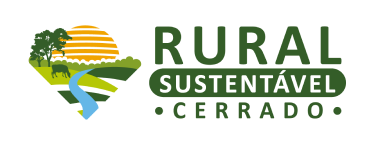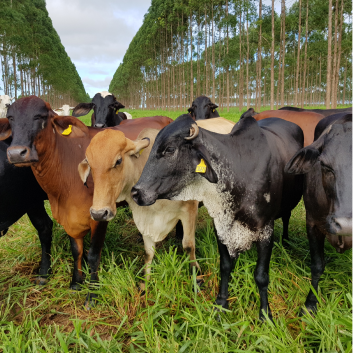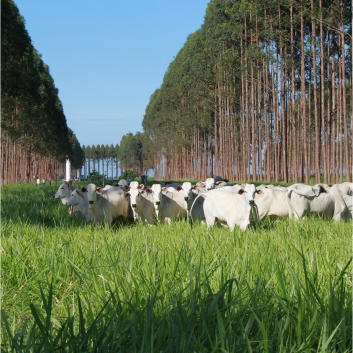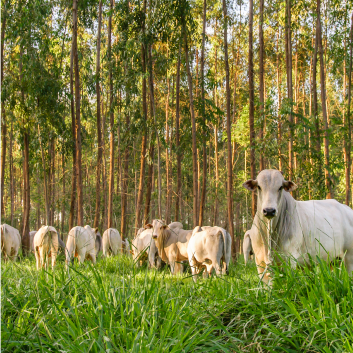
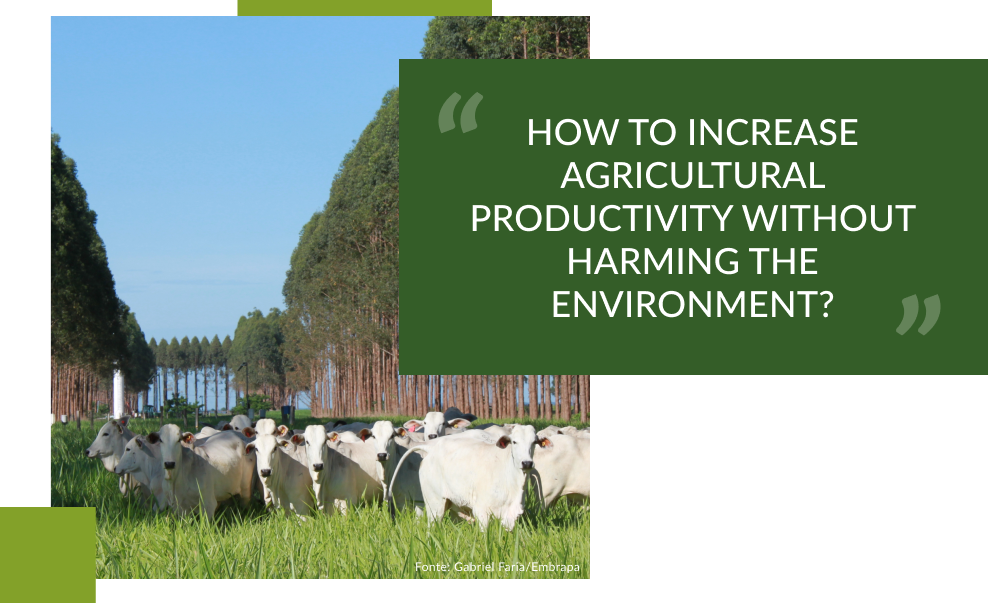

About the project
How to increase agricultural productivity without harming the environment? That is one of the world’s grand challenges today, and it is the driver of the Sustainable Rural Project – Cerrado. For four years (2019-2023), the project will work with rural producers and other actors in the Brazilian states of Goiás, Minas Gerais, Mato Grosso, and Mato Grosso do Sul in 101 municipalities, promoting the adoption of low carbon technologies by improving access to technical assistance, training, and credit, as well as strengthening local social-productive organizations.
The project is financed by Technical Cooperation approved by the Inter-American Development Bank (IDB) with resources of the United Kingdom Government’s International Climate Finance, with the Ministry of Agriculture and Livestock (MAPA) as the institutional beneficiary. The Brazilian Institute for Development and Sustainability (IABS) is responsible for the execution and administration of the project and the ILPF Network Association – through the Brazilian Agricultural Research Corporation (Embrapa) – is responsible for scientific coordination and technical support.
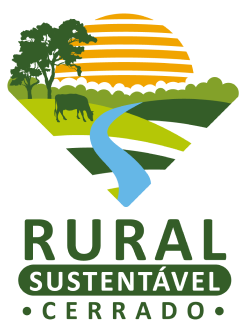
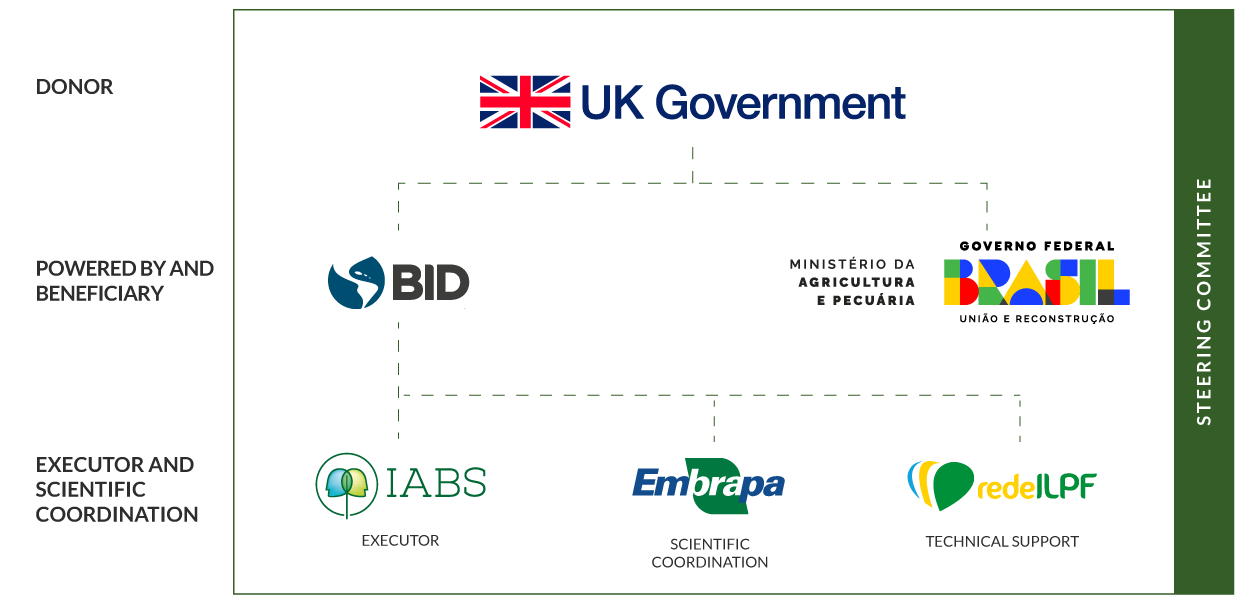
The general objective of the project is to mitigate Greenhouse Gas (GHG) emissions and increase the income of small and medium rural producers in the Cerrado biome, promoting the adoption of low carbon productive technologies. The project will implement activities that improve producers’ access to technical assistance, training, and credit, as well as actions to strengthen local productive organizations to promote the commercialization of their agricultural production. In addition, it will improve the capacities of local technical assistance service providers (institutions and individual professionals) to work with low carbon technologies.
Awareness-raising, training, capacity-building, and research actions are also part of our work, whether involving schools or research institutions or the local community itself, with empowerment workshops for various audiences.
The achievement of these objectives will be possible through the support in the adoption of Integrated Crop-Livestock-Forestry Systems (ICLF) and the recovery of degraded pastures.
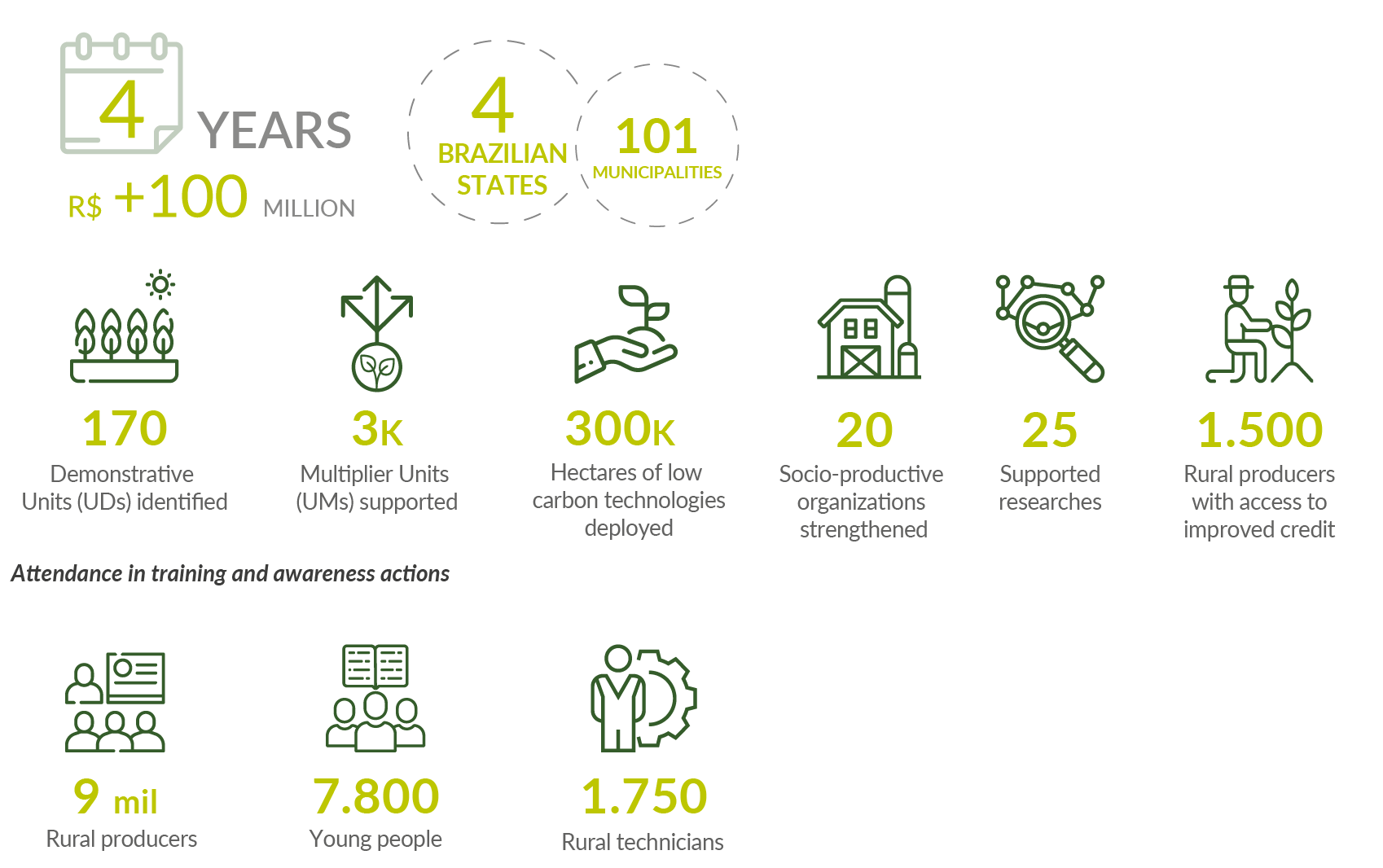
Training actions
This line of action aims at training, educating and sensitizing producers, rural technicians, public managers, students, educators, and other local actors in sustainable and low carbon agriculture technologies.
Field
This line of action supports, monitors, and executes the project’s activities and actions in the states and municipalities of scope. It aims to articulate and strengthen networks of partners and the various actions proposed, while mobilizing and strengthening relations with rural producers and between the various beneficiaries of the project.
Green Finance
The Green Finance action line has the objective of promoting a structure of economic-financial incentives, facilitating their access, and encouraging the development of sustainable value chains through collective benefits and the certification of rural properties within the scope of the project.
Research and Development
This action line works with targeted research projects and open calls for other research projects. Targeted research projects are executed by Embrapa, with the purpose of providing specific predefined scientific knowledge related to the project themes. The open calls for other research projects aim to financially support research on sustainable production systems developed in the project states – Goiás, Mato Grosso, Mato Grosso do Sul and Minas Gerais – in the Cerrado biome. Thus, the Sustainable Rural Project – Cerrado will financially support the research projects according to the criteria of the calls.
The Targeted Research are those carried out/executed/developed exclusively by Embrapa, with the purpose of adding scientific knowledge within the project.

About the project
How to increase agricultural productivity without harming the environment? That is one of the world’s grand challenges today, and it is the driver of the Sustainable Rural Project – Cerrado. For four years (2019-2023), the project will work with rural producers and other actors in the Brazilian states of Goiás, Minas Gerais, Mato Grosso, and Mato Grosso do Sul in 101 municipalities, promoting the adoption of low carbon technologies by improving access to technical assistance, training, and credit, as well as strengthening local productive organizations.
We are financed by the United Kingdom International Climate Finance (ICF) in cooperation with the Inter-American Development Bank (IADB), with the Ministry of Agriculture, Livestock, and Supply of Brazil (MAPA) as the institutional beneficiary. The Brazilian Institute for Development and Sustainability (IABS) is responsible for the execution and administration of the project and the ILPF Network Association – through the Brazilian Agricultural Research Corporation (Embrapa) – is responsible for scientific coordination and technical support.

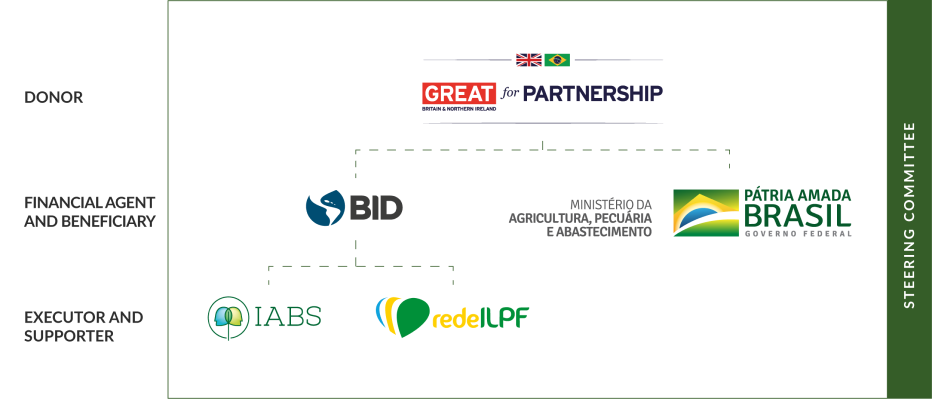

Training actions
This line of action aims at training, educating and sensitizing producers, rural technicians, public managers, students, educators, and other local actors in sustainable and low carbon agriculture technologies.
Field
This line of action supports, monitors, and executes the project’s activities and actions in the states and municipalities of scope. It aims to articulate and strengthen networks of partners and the various actions proposed, while mobilizing and strengthening relations with rural producers and between the various beneficiaries of the project.
Green Finance
The Green Finance action line has the objective of promoting a structure of economic-financial incentives, facilitating their access, and encouraging the development of sustainable value chains through collective benefits and the certification of rural properties within the scope of the project.
Research and Development
This action line works with targeted research projects and open calls for other research projects. Targeted research projects are executed by Embrapa, with the purpose of providing specific predefined scientific knowledge related to the project themes. The open calls for other research projects aim to financially support research on sustainable production systems developed in the project states – Goiás, Mato Grosso, Mato Grosso do Sul and Minas Gerais – in the Cerrado biome. Thus, the Sustainable Rural Project – Cerrado will financially support the research projects according to the criteria of the calls.
The Targeted Research are those carried out/executed/developed exclusively by Embrapa, with the purpose of adding scientific knowledge within the project.

Target audience
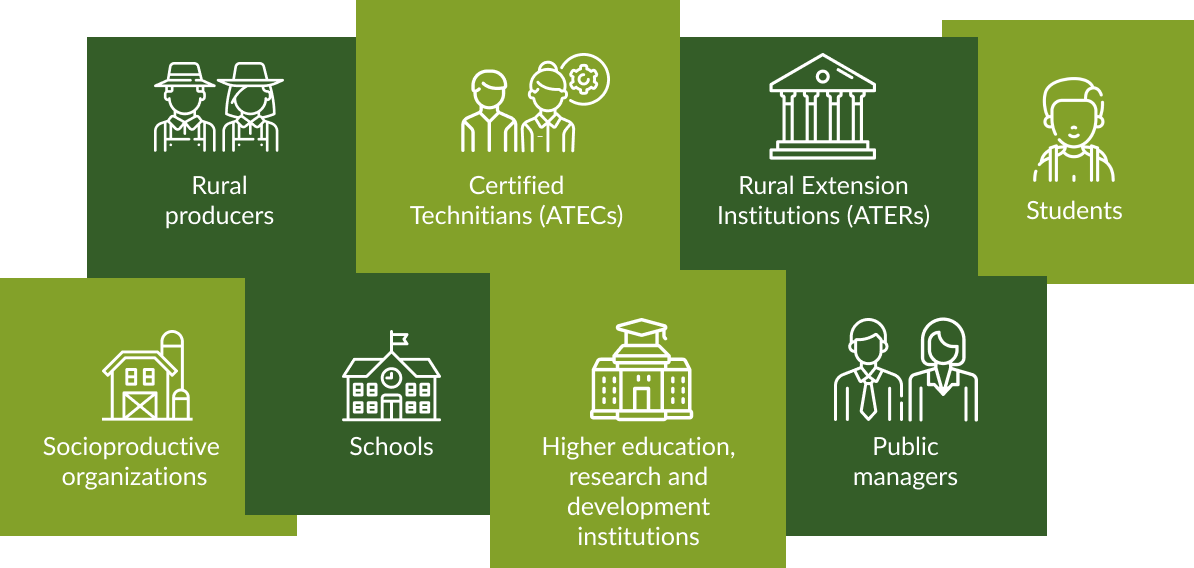
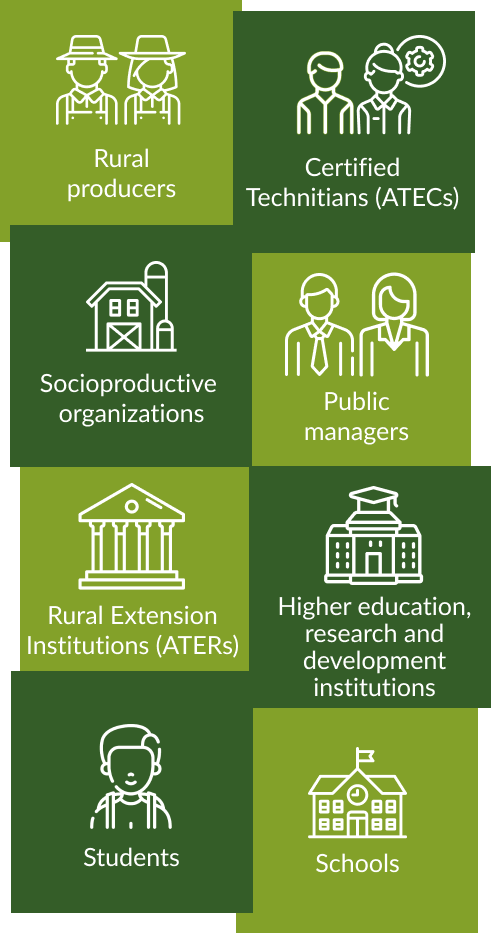

Intervention Area

Intervention Area
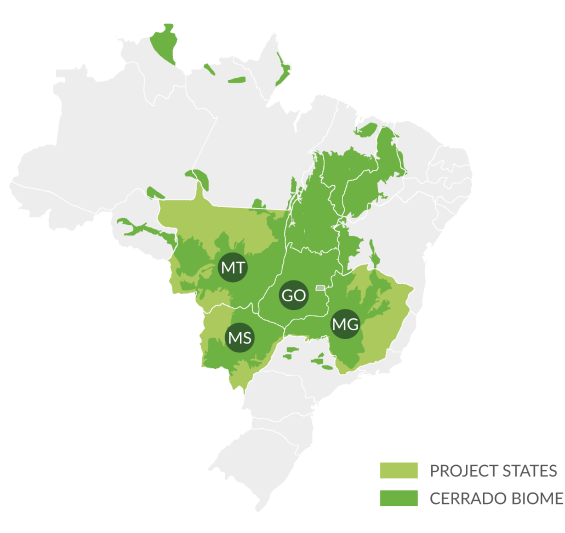
The Cerrado, the second largest biome in South America, is composed of savannas and pastures in the middle of humid areas and tropical forests, located in the highlands of Central Brazil. It corresponds to 22% of the Brazilian territory, covering more than 2 million km². Of its total area, 30% is occupied by pastureland and 12% by crops, mainly soybeans. The Cerrado covers the states of Goiás, Tocantins, Mato Grosso, Mato Grosso do Sul, Minas Gerais, Bahia, Maranhão, Piauí, Rondônia, Paraná, São Paulo, and the Federal District.
It is also in this biome that the springs of the three largest river basins in South America (Amazon/Tocantins, San Francisco, and Prata) are found. In other words, we are talking about a biome with unparalleled potential and vast biodiversity! Our Cerrado is recognized as the richest savannah in the world, sheltering almost 12,000 catalogued native plant species.
The states that make up this biome are among the largest beef and grain producers in Brazil and, consequently, have witnessed significant changes in land use and land cover.
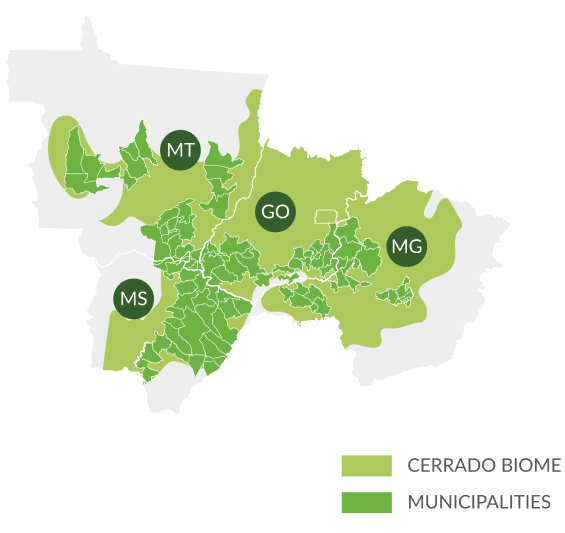
The project operates in four states: Goiás, Mato Grosso, Mato Grosso do Sul, and Minas Gerais. It will encompasses 101 municipalities that present a significant percentage of degraded pastures, high rates of deforestation, and the potential to introduce integrated production systems.
The rich Brazilian reality leads us to work with a diversity of rural properties. The area of the municipalities varies from about 6 thousand hectares (Palmelo – GO) to more than 1 million and seven hundred thousand hectares (Ribas do Rio Pardo – MS). That is, within the project, we are talking about small properties with limits of up to 60 hectares (Campo Grande – MS) to medium properties with maximum limits of 1,500.00 hectares (MT).

Technologies
The project encourages the implementation of low carbon productive technologies, especially the Integrated Crop-Livestock-Forestry Systems (ICLF) and the recovery of degraded pastures. ICLF is a production strategy that integrates different agricultural, cattle raising, and forestry activities in the same area, in consortium cultivation, in succession or rotation, seeking synergistic effects among its components, contemplating environmental adequacy and economic viability. In systems where there is an arboreal component, the planting spacing of the trees will be defined according to the objectives of the producer. Likewise, the choice of which strategy to use will depend on the characteristics of the region and the property, such as proximity to the market, logistics, relief, climate, the suitability of the property, available machinery, among others.
Unlike in monoculture systems, in ICLF systems the producer is able to optimize land use, diversify his or her income and increase productivity, in addition to reducing the pressure for opening new areas of native vegetation and mitigate greenhouse gas emissions. ICLF systems are also a strategy for recovering degraded pastures.
The ICLF can be classified into four modalities: Integrated Crop-Livestock-Forest System; Integrated Crop-Forest System; Integrated Livestock-Forest System; Integrated Crop-Livestock System.The choice of the most appropriate modality should be made based on the analysis of the region’s characteristics, climate conditions, and the producer’s objectives.
The Recovery of Degraded Pastures (RDP) consists of techniques that promote the recuperation of the productive capacity of degraded pastures, providing an increase in the productivity of forage species. Among these techniques, the use of liming and fertilization of pastures according to soil analysis and pasture management is highlighted, taking into consideration indications for fodder species used and the adjustment of the capacity rate.










